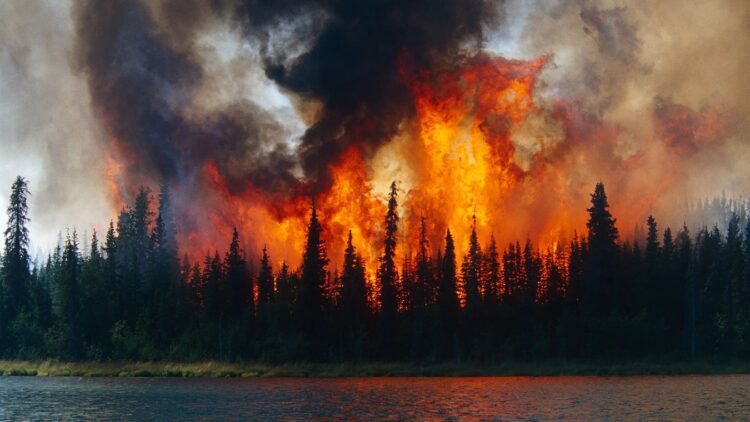The Arctic, once considered impervious to wildfire, is on the verge of a dramatic transformation. As climate change progresses and permafrost thaws, scientists warn that the region could face unprecedented wildfires by the century’s end. The implications of this transformation not only pose a serious risk to local ecosystems but also threaten to exacerbate climate change worldwide.
A worrying new era of wildfires
Recent research published in Nature Communications reveals alarming projections for the Arctic’s future: by the year 2100, wildfires could become frequent in regions previously thought to be too cold and damp for such disasters.
Climatologists using advanced models suggest that the thawing of permafrost—a permanently frozen layer of soil—will lead to drier conditions that are conducive to fire. This change is expected to create a feedback loop, whereby wildfires release large amounts of carbon emissions and methane, further accelerating global warming.
The Community Earth System Model simulations—which incorporate data from 1850 to 2100—suggest that huge increases in forest fires could occur in the latter half of this century. As permafrost thaws, it releases previously trapped greenhouse gases, leading to higher local temperatures and drier soils. It threatens both the Arctic’s fragile ecosystems and the world’s climate stability.
The boreal forest and its vulnerability
Edward Alexander, co-chair of the Gwich’in Council International, emphasizes the dire repercussions of these wildfires, especially for the boreal forests that span regions of Canada, Alaska, and Russia. The boreal forest is crucial for carbon storage but is increasingly under threat from climate change.
Historically, forest fires occurred every few years, enabling the ecosystem to renew itself. However, the ongoing climate crisis has intensified fire frequency and severity, resulting in substantial losses in biodiversity and habitat.
The Yukon Flats, a fire-prone region in Alaska, exemplifies the alarming trend. Since 1988, the number of years in which over 250,000 acres have burned has increased fourfold. This not only affects wildlife but also poses difficulties for indigenous communities relying on these lands for their livelihoods.
Call for action amid a cycle of destruction
The implications of these wildfires extend beyond immediate ecological damage. As aforementioned, wildfires release carbon and methane, contributing to a vicious cycle of climate change. As the Arctic warms, conditions become even more favorable for fire, leading to further permafrost thaw and worsening carbon emissions.
Ambassador Morten Høglund of the Arctic Council has warned that the rising frequency and intensity of these fires serve as a clear signal of the pressing need to tackle climate change. The council emphasizes the necessity of surveillance, fire prevention strategies, and international collaboration to reduce the effects of wildfires in this region.
Experts urge prompt action to oversee and manage the dangers linked to thawing permafrost and escalating wildfires. Proposed strategies include enhanced surveillance of permafrost conditions, fire prevention measures such as controlled burns, and a rapid decrease in global greenhouse gas emissions.
The Arctic’s transformation into a fire-prone region could drastically impact local ecosystems, disrupt the lives of indigenous communities, and lead to widespread consequences for worldwide climate patterns. As temperatures continue to rise, the urgency for united efforts to combat climate change has never been more critical.
If left unmanaged, the Arctic will become consumed by an unprecedented wildfire crisis, with the strong potential for catastrophic effects on both local and global levels. As scientists alert us to this impending change, it’s important for policymakers and communities to act swiftly to reduce the risks associated with climate change and safeguard the fragile ecosystems of the far north. The time to address this threat is now, before it becomes an irreversible reality.

